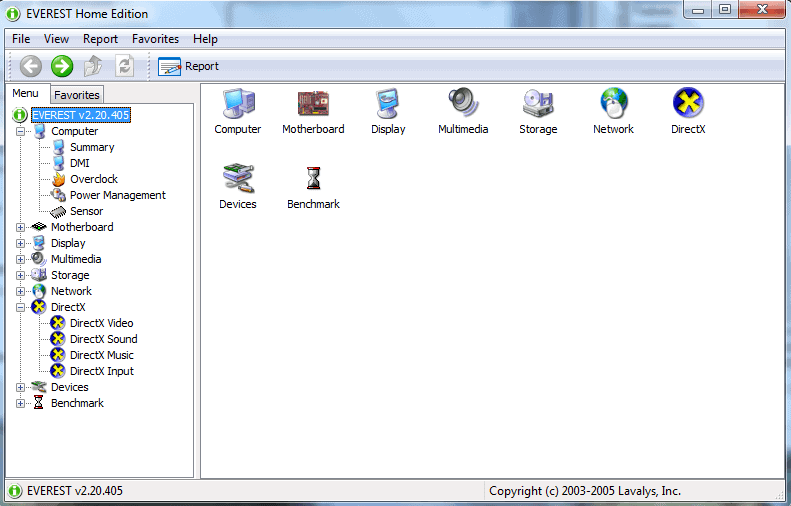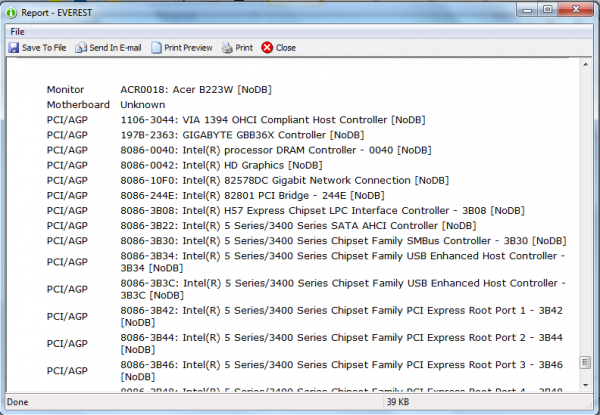Everest Home Edition, System Information Software

This fascinating freeware is a system information and diagnostic application that gives you an interface that the Windows Control Panel just can’t offer. All of the information Everest provides is something you could find on your own, it would just take much longer. Even low-level hardware information is displayed in detail. The interface is friendly and almost fun, if you consider system diagnostics fun.
Download Everest Home Edition and give it a try. The features are thorough and best described by the creators themselves:
- Advanced hardware monitor with OSD panel and cooling fans monitoring
- Real-time alternating for hot-plug devices
- Portable Computer page to display mobile PC related information
- Bluetooth PAN support
- File Scanner filtering
- User benchmark results manager
- Monitor Diagnostics
You should probably download it soon, because it is no longer available in a free edition, except from the link provided.
The product line was discontinued one year ago and this is a pity because it has all the bells and whistles you could want from a good system diagnostics application. It is designed for both 32-bit and 64-bit Microsoft Windows operating systems. It uses very little system resources: minimum 486 processor with 32 MB RAM. Some dinosaur PCs could handle that.
From the interface, you can get specifics on all hardware components and full reports with formatting options. You can open up an HTML report on any component and see exactly what is going on.
This comes from Everest’s Report Wizard and all offsets are displayed as well. This is a panorama from which you can find any issues with PC hardware with ease. If you are already familiar with hardware diagnosis, this will be quite a treat. The Report wizard is a standard Windows layout. You get complete reports and you can export them to a file for comparative analysis.
For customization purposes, you can tweak to your heart’s content, but be careful not to blow the whole game. As always, backup and create a restore point if you are going to go messing around with settings.
Select any component from the menu and click the Report tab then choose a report in Plain Text, HTML or MHTML. Every detail is there before your eyes.
The first page of the Preferences module has a list of all user interface languages and it is as easy as selecting Preferences and then selecting a language to change the interface. Restart and the language is reset.
Open the system devices panel and everything is listed perfectly. Just scroll through specified devices and properties and get complete diagnostic reports. Everest Home Edition doesn’t miss anything. It is unfortunate that the program will have no further updates. It will soon be outgrown, but for now, this is a piece of software worth taking for a test drive. That is about what it takes to learn how to use it. Explore the options and get what is perhaps one of the clearest hardware diagnostic tools available for free, at least for now.
Advertisement





















Good review. Thanks
it is really nice
Most of the files are dated 2005.
Files installed by
http://download2.pro.de/action/everestUE_en.exe
are dated 2008 and
RHGJE-54X47-HML9C-V498I-UUMVI
still works.